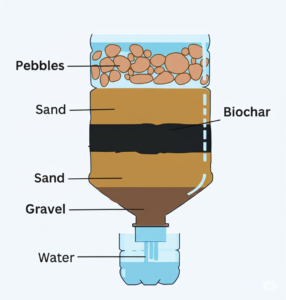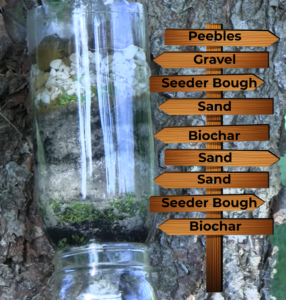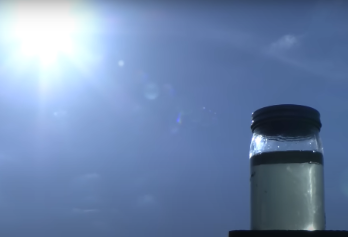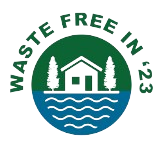DIY Biochar-Based Water Filter for Safe Drinking Water: Small and Large Scale
Let’s create a cheap, efficient, and easy-to-build water filter for emergency and community use.
Scientific evidence behind the process
- Biochar is effective at removing turbidity, bacteria, and some heavy metals when used as part of a layered filtration system [1].
- Combining biochar with sand and gravel improves microbial removal and flow rates [2].
- Low-cost biochar made from agricultural waste (coconut shells, bamboo, rice husk) can match or outperform commercial activated carbon in rural settings [3].
- Field trials showed biochar-sand filters reduced E. coli counts even at high concentrations [4].
Small-Scale DIY Biochar Water Filter: An efficient, low-cost design
Materials:
- 2-5L plastic bottle or bucket (food grade)
- Washed gravel, Peebles
- Clean fine sand
- Crushed, sieved biochar (Easiest biochar production method)
- Cloth or mesh (optional)
- Knife or drill
Assembly:
- Cut bottle/bucket: Remove bottom (for filling) and make a small hole at the cap or near the base.
- Layer (bottom → top):
- Cloth/mesh (optional)
- Coarse rocks or peebles
- 5 cm gravel
- 10 cm fine sand
- 10 cm biochar
- Optional: Cedar boughs (preferred)/twigs
- Optional: repeat sand + biochar + cedar bough.


3. Place on a stand and collect filtered water in a clean container.
4. Target flow rate: ~1–2 L/hour.
Safety & Maintenance
- Boil or sun-dry biochar before use.
- Replace biochar every 2–4 weeks.
- Combine the filtered water with
- boiling (no distillation),
- or chlorination (add 2 drops of household bleach per liter),
- or solar disinfection (leave water under the sun with cap on and optionally slight warming to speed up the process) for pathogen safety.

Medium to Large-Batch Biochar Filtration Method
For applications requiring higher water volumes like treating 20 liters in a single cycle – a scaled-up container-based biochar filter can be employed. Aqueous Solutions offers an excellent, field-tested design reference, the “300 L/day blue barrel system,” which can be adapted for medium-volume use.
To explore the complete design, construction steps, and operational guidelines, watch and learn from the original source here:
This resource is exceptionally clear, technically sound, and supported by real-world deployment examples. Highly recommended for practitioners seeking reliable and replicable solutions.
Verified Sources Used For The Process:
- DIY techniques based on Aqueous Solutions and Dr. Josh Kearns’ designs for filtering drinking water using biochar.
- Instructables: Charcoal Water Filter
- “How to Make a Biochar Water Filter” — includes demonstration of lab-tested water filtration results using biochar.
- Engineering For Change – “How to Make a Biochar Water Filter”
- Biochar International site: “Using Biochar for Water Filtration in Rural SE Asia”
Got questions?

